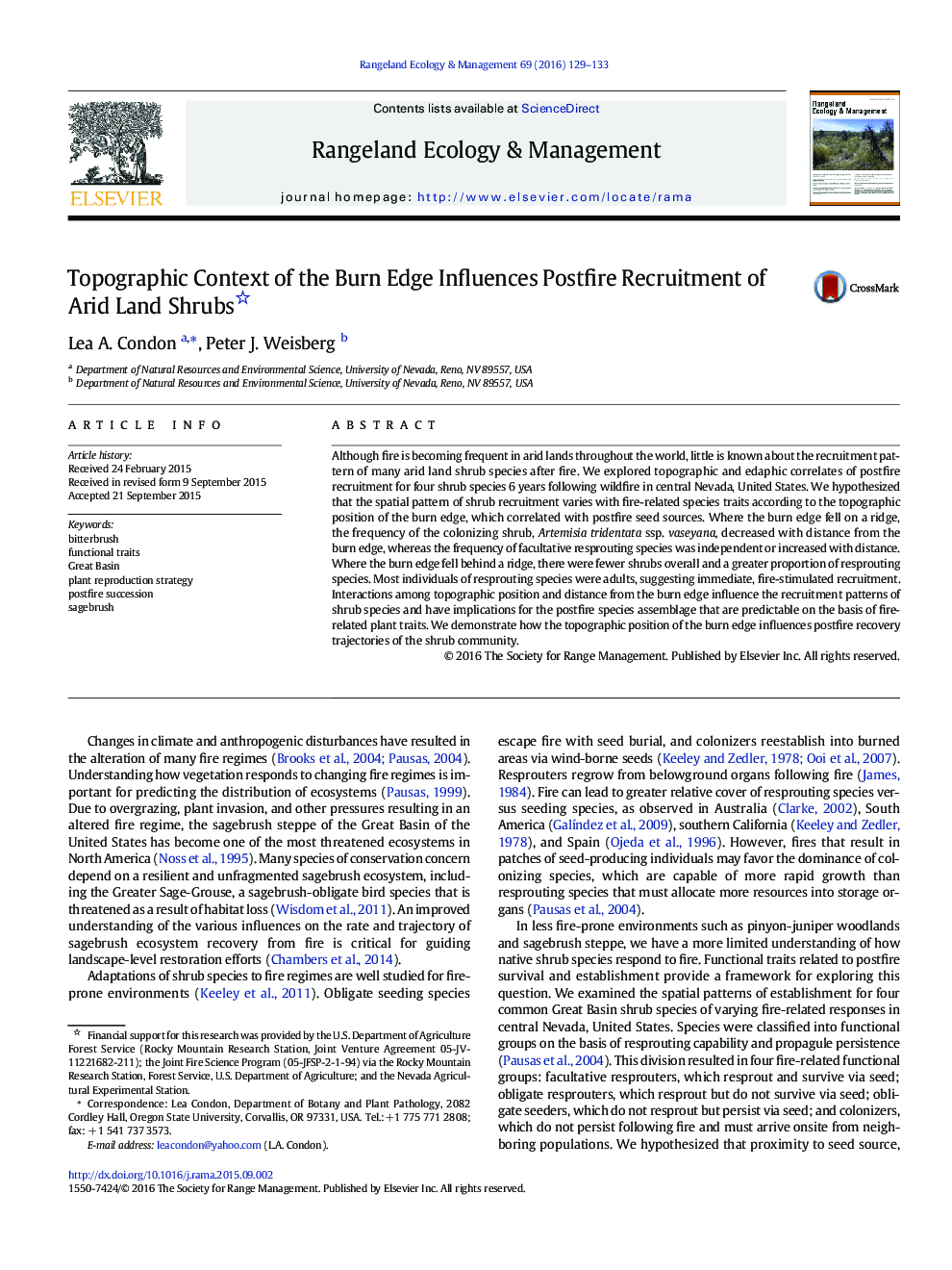| Article ID | Journal | Published Year | Pages | File Type |
|---|---|---|---|---|
| 4404193 | Rangeland Ecology & Management | 2016 | 5 Pages |
Abstract
Although fire is becoming frequent in arid lands throughout the world, little is known about the recruitment pattern of many arid land shrub species after fire. We explored topographic and edaphic correlates of postfire recruitment for four shrub species 6 years following wildfire in central Nevada, United States. We hypothesized that the spatial pattern of shrub recruitment varies with fire-related species traits according to the topographic position of the burn edge, which correlated with postfire seed sources. Where the burn edge fell on a ridge, the frequency of the colonizing shrub, Artemisia tridentata ssp. vaseyana, decreased with distance from the burn edge, whereas the frequency of facultative resprouting species was independent or increased with distance. Where the burn edge fell behind a ridge, there were fewer shrubs overall and a greater proportion of resprouting species. Most individuals of resprouting species were adults, suggesting immediate, fire-stimulated recruitment. Interactions among topographic position and distance from the burn edge influence the recruitment patterns of shrub species and have implications for the postfire species assemblage that are predictable on the basis of fire-related plant traits. We demonstrate how the topographic position of the burn edge influences postfire recovery trajectories of the shrub community.
Related Topics
Life Sciences
Agricultural and Biological Sciences
Agricultural and Biological Sciences (General)
Authors
Lea A. Condon, Peter J. Weisberg,
